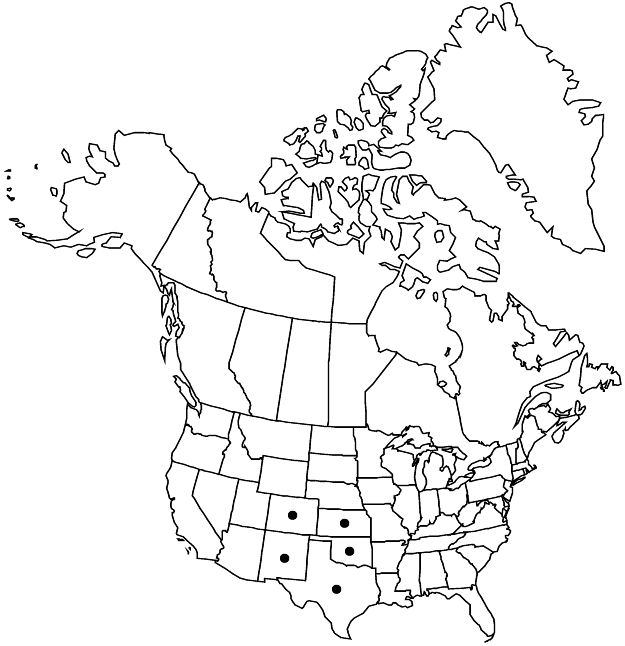Difference between revisions of "Euphorbia lata"
in W. H. Emory, Rep. U.S. Mex. Bound. 2(1): 188. 1859.
FNA>Volume Importer |
imported>Volume Importer |
||
| (2 intermediate revisions by 2 users not shown) | |||
| Line 1: | Line 1: | ||
{{Treatment/ID | {{Treatment/ID | ||
|accepted_name=Euphorbia lata | |accepted_name=Euphorbia lata | ||
| − | |accepted_authority=Engelmann | + | |accepted_authority=Engelmann |
|publications={{Treatment/Publication | |publications={{Treatment/Publication | ||
| − | |title=Rep. U.S. Mex. Bound. | + | |title=in W. H. Emory, Rep. U.S. Mex. Bound. |
|place=2(1): 188. 1859 | |place=2(1): 188. 1859 | ||
|year=1859 | |year=1859 | ||
| Line 10: | Line 10: | ||
|basionyms={{Treatment/ID/Basionym | |basionyms={{Treatment/ID/Basionym | ||
|name=Euphorbia dilatata | |name=Euphorbia dilatata | ||
| − | |authority=Torrey & A. Gray | + | |authority=Torrey & A. Gray |
|rank=species | |rank=species | ||
| − | |publication_title=Pacif. Railr. Rep. | + | |publication_title=in War Department [U.S.], Pacif. Railr. Rep. |
|publication_place=2(4): 175. 1857 | |publication_place=2(4): 175. 1857 | ||
}} | }} | ||
| Line 46: | Line 46: | ||
-->{{#Taxon: | -->{{#Taxon: | ||
name=Euphorbia lata | name=Euphorbia lata | ||
| − | |authority=Engelmann | + | |authority=Engelmann |
|rank=species | |rank=species | ||
|parent rank=section | |parent rank=section | ||
| Line 57: | Line 57: | ||
|distribution=Colo.;Kans.;N.Mex.;Okla.;Tex.;Mexico (Chihuahua;Coahuila). | |distribution=Colo.;Kans.;N.Mex.;Okla.;Tex.;Mexico (Chihuahua;Coahuila). | ||
|reference=None | |reference=None | ||
| − | |publication title=Rep. U.S. Mex. Bound. | + | |publication title=in W. H. Emory, Rep. U.S. Mex. Bound. |
|publication year=1859 | |publication year=1859 | ||
|special status= | |special status= | ||
| − | |source xml=https:// | + | |source xml=https://bitbucket.org/aafc-mbb/fna-data-curation/src/2e0870ddd59836b60bcf96646a41e87ea5a5943a/coarse_grained_fna_xml/V12/V12_559.xml |
|genus=Euphorbia | |genus=Euphorbia | ||
|section=Euphorbia sect. Anisophyllum | |section=Euphorbia sect. Anisophyllum | ||
Latest revision as of 19:16, 5 November 2020
Herbs, perennial, with moderately thickened to robust rootstock. Stems ascending to erect, or prostrate, 10–25 cm, strigose to short-sericeous or ± villous. Leaves opposite; stipules distinct, filiform, 0.8–1.3 mm, strigose to short-sericeous or ± villous; petiole 0.5–2 mm, densely strigose to short-sericeous or ± villous; blade narrowly to broadly ovate-deltate, older ones often falcate, 4–12 × 3–7 mm, base asymmetric, obliquely rounded to obtuse, noticeably wider on one side, margins entire, often ± revolute, apex broadly acute, surfaces strigose to short-sericeous or ± villous; obscurely 3–5-veined from base, midvein prominent abaxially. Cyathia solitary at distal nodes; peduncle 1–3 mm. Involucre broadly campanulate, 2–2.5 × 2.2–2.6, strigose; glands 4, greenish, oblong to semilunate, 0.2–0.7 × 0.6–1 mm; appendages rudimentary or white, forming narrow band, (0–)0.1–0.2 × (0–)0.6–1 mm, distal margin entire or crenate. Staminate flowers 25–35. Pistillate flowers: ovary densely strigose to short-sericeous or ± villous; styles dark purplish, 0.8–1.2 mm, 2-fid 1/2 to nearly entire length. Capsules ovoid, 1.9–2.3 × 2–2.4 mm, strigose to short-sericeous or ± villous; columella 1.7–2.2 mm. Seeds whitish, oblong, 4-angled in cross section, faces concave, 1.5–1.8(–2) × 0.6–0.9 mm, smooth. 2n = 28, 56.
Phenology: Flowering and fruiting spring–fall.
Habitat: Mountain slopes, canyons, basins, rocky prairies, roadsides, disturbed sites, usually in calcareous soils, sometimes in igneous-derived, sandy or rocky soils.
Elevation: 600–2200 m.
Distribution

Colo., Kans., N.Mex., Okla., Tex., Mexico (Chihuahua, Coahuila).
Discussion
Selected References
None.